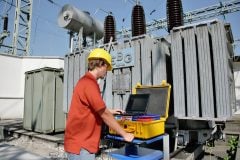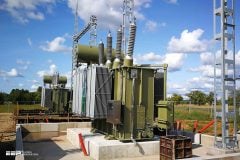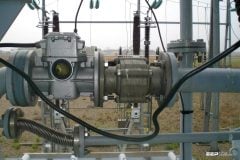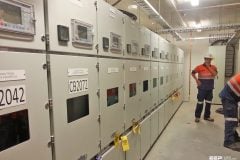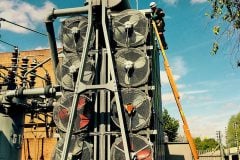Transformer on-site checks
On-site inspection of the substation transformer usually exposes important condition changes and it initiates various suspicions that need to be investigated in detail. As with any other substation equipment, many things could go wrong during the transformer operation. For example, temperature indicators could stuck, or Buchholz relay’s mechanism could falsely detect faults or even oil pump failure.
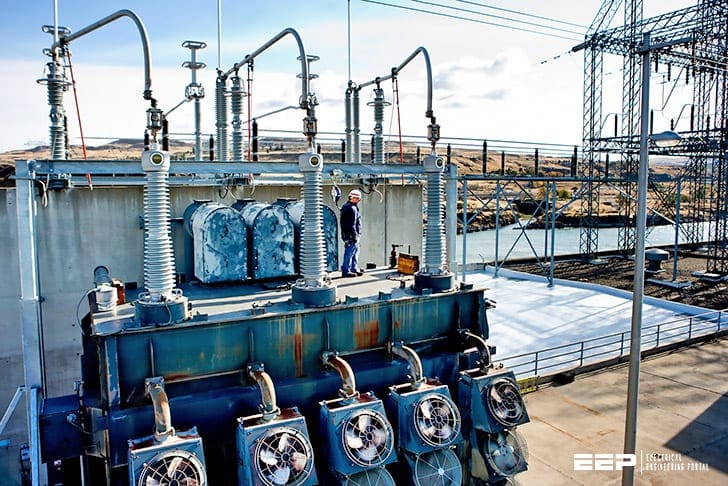
Not to speak of the oil leaks that can often indicate a potential for oil contamination, loss of insulation, or environmental problems. These are all very serious problems that substation maintenance staff must take care of very carefully when inspecting a transformer.
Such transformer inspection requires maintenance staff experienced in these techniques. Ok, let’s name these checks and try to shed some light on each of them.
Table of contents (or what you have to do):
- To check temperature indicators online
- To check temperature indicators offline
- To check conservator
- To check conservator breather
- To check nitrogen
- To check for oil leaks
- To check pressure relief device
- To check oil pumps
- To check fans and radiators
- To check Buchholz relay
- To check sudden pressure relay
- To check bladder failure relay
1. To Check Temperature Indicators Online
Check all temperature indicators while the transformer is online. The winding temperature indicator should be reading approximately 15 degrees above the top oil temperature. If this is not the case, one or both temperature indicators are malfunctioning.
Check the top oil temperature next to the top oil indicator’s thermowell with an infrared camera. Compare the readings with the top oil indicator. Reset all maximum indicator hands on the temperatures indicating devices after recording the old maximum temperature readings.
High temperature may mean overloading, cooling problems, or problems with windings, core, or connections.
Field testing has shown some of these indicators reading 15 °C to 20 °C lower than actual temperature.
This is hazardous for transformers because it will allow them to continuously run hotter than intended, due to delayed alarms and cooling activation. If thermometers are not tested and errors corrected, transformer service life may be shortened or premature failure may occur.
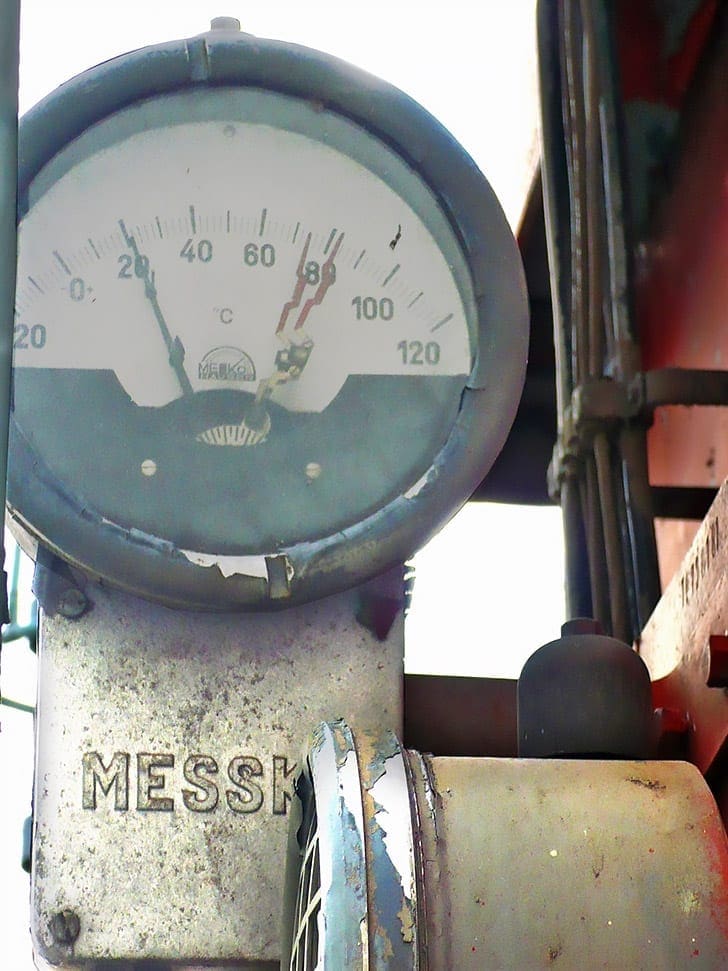

Go back to Table of Contents ↑
2. To Check Temperature Indicators Offline
When the transformer is offline and has cooled to ambient temperature, check the top oil and winding temperature indicators. Both should be reading the same. If not, one or both temperature indicators are malfunctioning.
Check the calibration according to the proper procedure. Also compare these readings with the indicated temperature on the conservator oil level indicator. All three should agree.
Go back to Table of Contents ↑
3. To Check Conservator
Check the oil level gauge on the conservator. See Figure 2 below. This gauge indicates oil level by displaying a temperature. Compare the indicated temperature on the conservator level gauge with the top oil temperature indicator. They should be approximately the same.
Calibrate or replace the conservator oil level indicator if needed, but only after checking the top oil temperature indicator.
With the transformer offline and under clearance, open the inspection port on top of the conservator and look inside with a flashlight. If there is a leak, oil will be visible on top of the diaphragm or inside the bladder. Reclose the conservator and replace the bladder or diaphragm at the first opportunity by scheduling an outage.


If there is no gas inside the Buchholz Relay, the transformer may be re-energized after bleeding the air out of the bladder failure relay. A DGA should be taken immediately to check for O2, N2, and moisture.
However, the transformer may be operated until a new bladder is installed, keeping a close eye on the DGAs. It is recommended that DGAs be performed every 3 months until the new bladder is installed. After the bladder installation, the oil may need to be de-gassed if O2 exceeds 10,000 ppm.
Check the desiccant in the breather often. Never let more than two-thirds become discolored before renewing the desiccant. All efforts should be made to keep the oxygen level below 2,000 ppm and moisture as low as possible.
Go back to Table of Contents ↑
4. To Check Conservator Breather
Check the dehydrating (desiccant) breather for proper oil level if it is an oil type unit. Check the color of the desiccant and replace it when approximately one-third remains with the proper color.
See Figure 3 for an oil type desiccant breather.
Notice the pink desiccant at the bottom of the blue indicating that this portion is water saturated. Notice also that oil is visible in the very bottom 1-inch or so of the unit. Many times, the oil is clear, and the oil level will not be readily apparent.
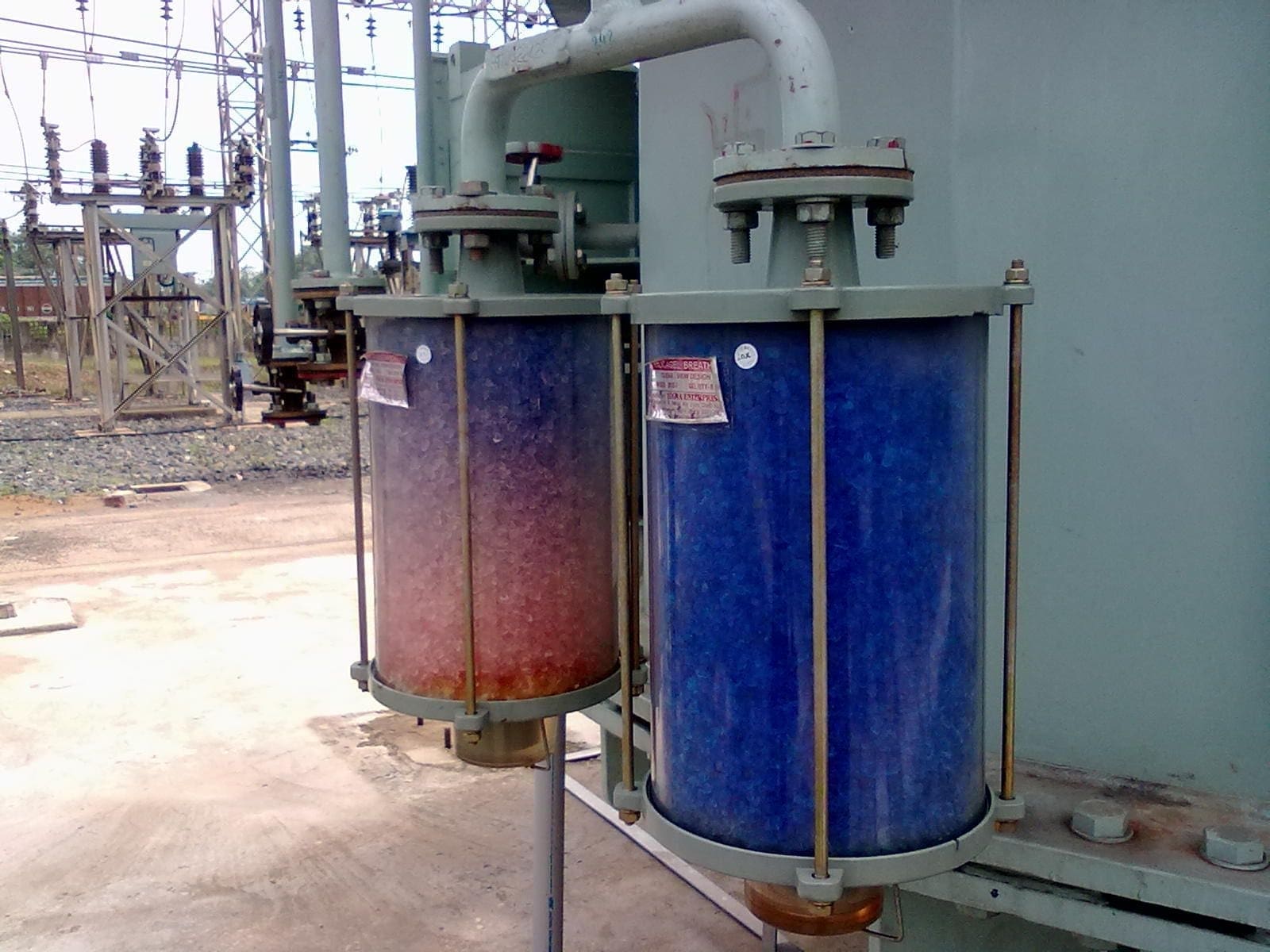

Normally, there is a thin line around the breather near the bottom of the glass. This indicates where the oil level should be. Compare the oil level with the level indicator line and refill, if necessary. Note the 1¼-inch pipe going from the breather to the conservator.
Small tubing (½ inch or so) is not large enough to admit air quickly when the transformer is de-energized in winter.
A transformer can cool so quickly that a vacuum can be created from oil shrinkage with enough force to puncture a bladder. When this happens, the bladder is destroyed and air is pulled into the conservator making a large bubble.
Go back to Table of Contents ↑
5. To Check Nitrogen System
If the transformer has a nitrogen blanket, check the pressure gauge for proper pressure. Look at the operators recording of pressures from the pressure gauge. If this does not change, the gauge is probably defective. Check the nitrogen bottle to insure the nitrogen is the proper quality.
Check for any increased usage of nitrogen which indicates a leak. Smaller transformers such as station service or smaller generator-step-up transformers may not have nitrogen bottles attached to replace lost nitrogen.
Be especially watchful of the pressure gauge and the operator’s records of pressures with these. The pressure gauge can be defective for years, and no one will notice. And that’s not good.


The gauge will read nearly the same and will not vary much over winter and summer or night and day. Meanwhile, a nitrogen leak can develop and all the N2 will be lost. This allows air with oxygen and moisture to enter and deteriorate the oil and insulation. Watch for increased oxygen and moisture in the DGA.
An ultrasonic and sonic leak detection instruments are usually used for locating N2 leaks.





